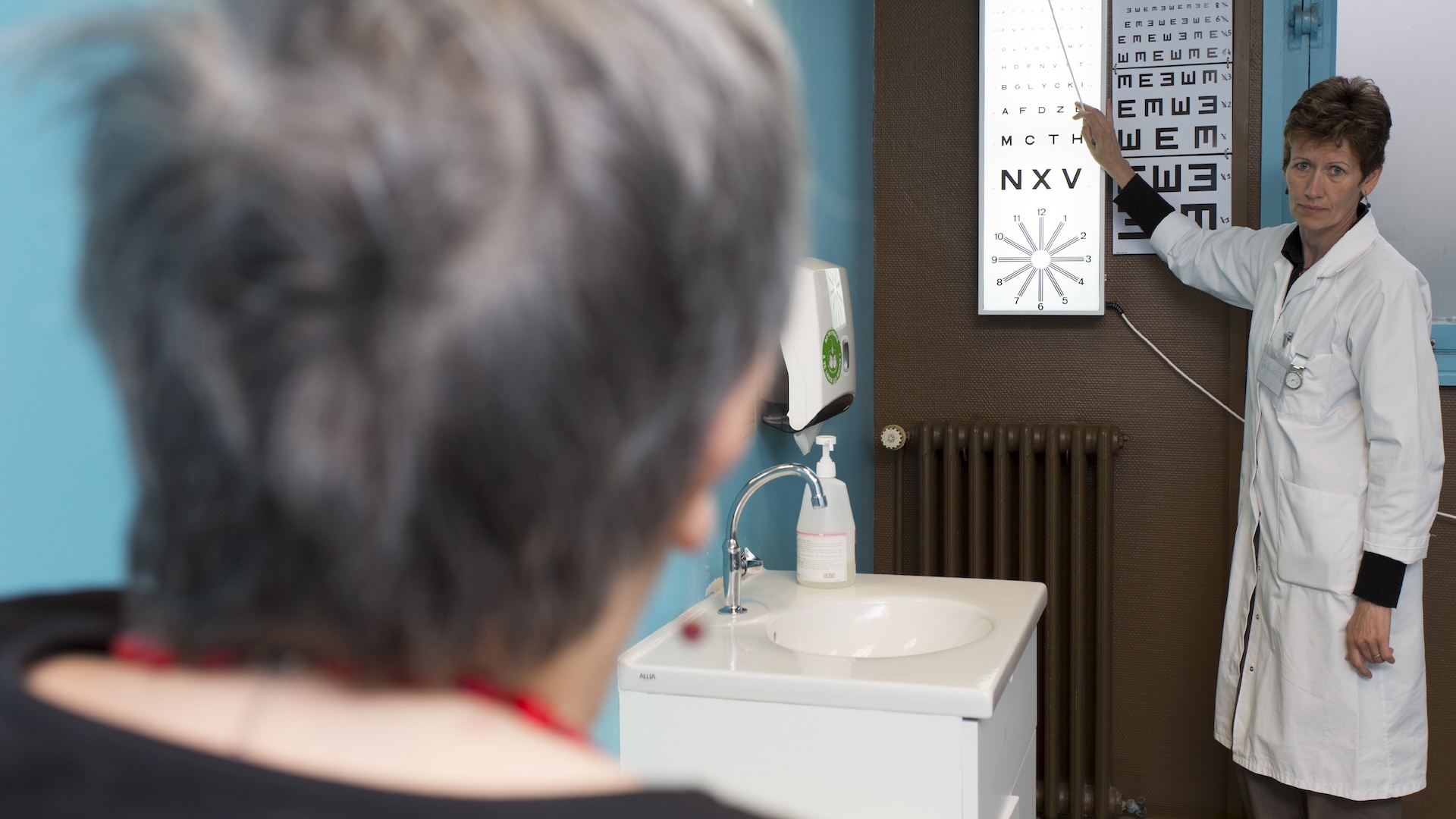
A device that beams light into the eyes can improve the sight of people with a leading form of vision loss, known as age-related macular degeneration (AMD), the U.S. Food and Drug Administration (FDA) decided Monday (Nov. 4).
AMD progressively damages the center of the retina, the light-detecting region at the back of the eye. Recent data suggests that this condition affects about 19.8 million Americans ages 40 and older. The disease comes in two forms — dry AMD and wet AMD — with the former being more common, making up about 70% to 90% of cases. Despite its commonality, though, there were no effective treatments for dry AMD.
Now, the FDA has announced that it will allow a device called the Valeda Light Delivery System to be used as a dry AMD treatment.
"Today's action brings to market the first therapeutic option for adult patients with dry AMD," Dr. Malvina Eydelman, director of the Office of Ophthalmic, Anesthesia, Respiratory, ENT and Dental Devices at the FDA's Center for Devices and Radiological Health, said in the announcement.
Related: Melatonin may stave off age-related vision loss, study hints
The device, made by LumiThera, contains three light-emitting diodes, better known as LEDs. These diodes release light of different wavelengths, corresponding to the yellow, red and near-infrared portions of the electromagnetic spectrum. There's evidence to suggest that these wavelengths have an effect on the retina's mitochondria, the powerhouses of its cells.
Mitochondria malfunction in dry AMD, and past research had suggested this type of light exposure can boost the powerhouses' ability to make fuel and repair damage. Simultaneously, it may prompt the mitochondria to release chemicals that boost blood flow to the retina, while also reducing inflammation, according to The Macular Society, a U.K.-based charity.
The LED device was tested in a clinical trial involving 100 people with dry AMD in its early or intermediate stages. Among these subjects, 91 eyes were treated with the Valeda Light Delivery System and 54 received a sham treatment. The participants received either this treatment or the placebo three times a week for three to five weeks, and then this pattern was repeated every four months over the course of two years.
On average, the treated eyes could see at least five more letters on the eye chart than they had prior to treatment, about equivalent to one full line on the chart. These improvements were seen about halfway through the study and again at its close, so the improvement seems to last for at least that long.
In addition, compared to the untreated eyes, a lower percentage of the treated eyes worsened to the most advanced stage of AMD — with only about 7% worsening, compared with 24% of the placebo group.
Normally, as AMD progresses, clumps of protein and fat called drusen build up under the retina. Drusen growing larger or more plentiful is considered a hallmark of AMD, as it coincides with retinal cells degrading. In the treated eyes, any clumps that existed didn't seem to grow in size, whereas they did grow larger in the untreated eyes.
Based on these data, the FDA authorized the Valeda Light Delivery System to be marketed as a way to help improve vision in certain dry AMD patients.
"The results supported overall safety benefits of treating earlier in dry AMD disease," Dr. Glenn Jaffe of Duke University School of Medicine, who was involved in the trial, said in a statement from LumiThera. In other words, the device likely helps most in early stages of dry AMD, before permanent vision loss sets in.
Editor's note: This story was updated to correct the acronym for AMD.
This article is for informational purposes only and is not meant to offer medical advice.
Ever wonder why some people build muscle more easily than others or why freckles come out in the sun? Send us your questions about how the human body works to community@livescience.com with the subject line "Health Desk Q," and you may see your question answered on the website!







